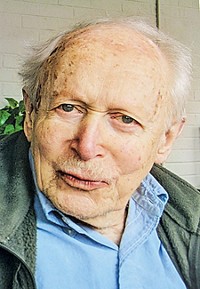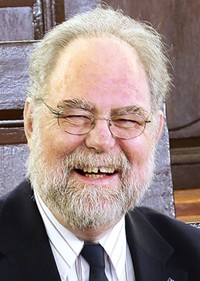Advertisement
Grab your lab coat. Let's get started
Welcome!
Welcome!
Create an account below to get 6 C&EN articles per month, receive newsletters and more - all free.
It seems this is your first time logging in online. Please enter the following information to continue.
As an ACS member you automatically get access to this site. All we need is few more details to create your reading experience.
Not you? Sign in with a different account.
Not you? Sign in with a different account.
ERROR 1
ERROR 1
ERROR 2
ERROR 2
ERROR 2
ERROR 2
ERROR 2
Password and Confirm password must match.
If you have an ACS member number, please enter it here so we can link this account to your membership. (optional)
ERROR 2
ACS values your privacy. By submitting your information, you are gaining access to C&EN and subscribing to our weekly newsletter. We use the information you provide to make your reading experience better, and we will never sell your data to third party members.
People
Edgar Fahs Smith Remembered
ACS Meeting News: University of Pennsylvania chemist fostered electrochemistry, ACS, and chemical history
by Stu Borman
September 3, 2012
| A version of this story appeared in
Volume 90, Issue 36

On the campus of the University of Pennsylvania, a statue honors the distinguished 19th- and 20th-century electrochemist Edgar Fahs Smith. It depicts Smith seated, with one foot stepping on a small gargoylelike creature—a tribute to his penchant for crushing “error” underfoot.
This and other particulars about Smith’s notable life were remembered in a Division of the History of Chemistry (HIST) session at last month’s American Chemical Society national meeting in Philadelphia. The session was organized by chemistry professor Ned D. Heindel of Lehigh University and the late chemical historian James J. Bohning.
Smith made key research contributions in electrochemistry, helped found two ACS divisions, served three terms as ACS president, and brought new life to preserving and recounting the history of chemistry.
He was born in York, Pa., in 1854, and died in 1928, said Vera V. Mainz, retired director of the NMR lab at the University of Illinois, Urbana-Champaign, at the session. Smith earned a Ph.D. in chemistry with noted German chemist Friedrich Wöhler at the University of Göttingen in 1876, Mainz said. His first teaching positions were at the University of Pennsylvania; Muhlenberg College, in Allentown, Pa.; and Wittenberg College, in Springfield, Ohio. But in 1888 he was called back to Penn and spent the rest of his career there, initially as a chemistry professor and later as university provost.
“Smith was one of the most prolific electrochemists in the period 1879 to 1918,” said chemistry professor Gary D. Patterson of Carnegie Mellon University in another talk at the session. “His monograph ‘Electro-chemical Analysis’ was first published in 1890 and went through six editions until 1918. He was a consummate experimentalist and subjected at least 20 metals to electrochemical analysis. He was a master of electrochemical separations.” His most notable experimental advance was the development of the rotating anode, which changed the timescale of electrochemical analysis from hours to minutes and greatly improved its precision. He used the instrument to crush error underfoot by revising some element atomic weights.

Like other academic leaders of his generation, Smith valued historical chemistry highly because it revealed humanistic and cultural aspects of chemistry that helped his students better understand the subject and take pride in their chosen career, said Jeffrey L. Sturchio, senior partner of the consulting firm Rabin Martin. Smith assembled one of the world’s greatest collections of historical chemistry books, Sturchio noted. A highlight of the collection was Sir Isaac Newton’s copy of Elias Ashmole’s “Theatrum Chemicum Britannicum” (1652), in which the English physicist dog-eared many pages and made extensive notes in his own hand. Smith donated the collection to Penn, where it is now the core of a much larger collection of books, documents, and images on the history of chemistry that is accessible to all—the Edgar Fahs Smith Memorial Collection, an ACS National Historic Chemical Landmark.
Smith was also a prolific writer of books on the lives of early chemists, said chemistry professor Arthur Greenberg of the University of New Hampshire. Major works Smith authored include “Chemistry in America,” “Priestley in America,” “Old Chemistries,” and “Chemistry in Old Philadelphia.” Smith employed a colorful and informal writing style that could make readers think they were sitting by his side in his parlor at home, Greenberg said.
Smith was president of ACS in 1895, 1921, and 1922. And the Division of Chemical Education (CHED) and HIST owe their existence in large part to Smith, said chemistry professor Roger A. Egolf of Pennsylvania State University, Lehigh Valley. CHED’s formation in 1921 was spearheaded by University of Maryland chemistry professor Neil E. Gordon, but Smith played a guiding role and was the division’s first chair. Smith and Charles A. Browne, chief chemist at the New York Sugar Trade Laboratory, jointly initiated HIST, which first convened in 1921.
After retiring from Penn in 1920, Smith continued collecting, writing, and perhaps crushing errors underfoot, until his death in 1928.





Join the conversation
Contact the reporter
Submit a Letter to the Editor for publication
Engage with us on Twitter